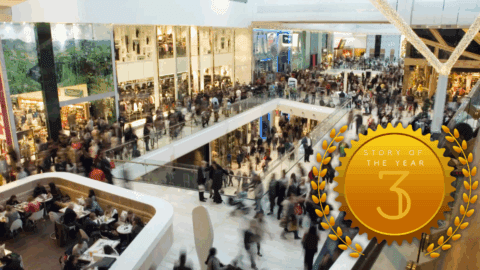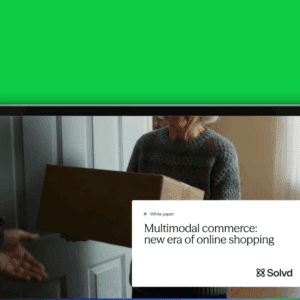Consumers today expect immersive, content-rich ecommerce sites, yet if a site takes longer than four seconds to load, 63% of shoppers will abandon it altogether. It’s an ever-present internal conflict for many ecommerce and marketing teams that are striving to maximize both time-on-site and conversion rate metrics — and it’s one that standing desk and office furniture manufacturer Uplift Desk has evidently addressed since implementing BigCommerce’s Catalyst storefront technology.
In fact, since migrating to this composable commerce architecture, the Uplift team has been able to accelerate time to market and seen a significant improvement in its Google Lighthouse score, which measures sites based on different web performance metrics — including Largest Contentful Paint, which is based on how quickly the largest image or text block appears on a site. As a result, the team has seen overall bounce rates drop, especially on high-impact pages like its Desk Configurator tool.
As a brand with both a business-to-business (B2B) and business-to-consumer (B2C) sales model, Uplift Desk has had to focus equally on the speed and performance of the site, as well as the quality of the site design and content. However, the team was struggling to design, iterate and improve the website at a much faster speed. “We also wanted our overall architecture and web systems to load and process at a much faster rate, but at the same time, our development team was slowly becoming obsessed with Next.js as their framework for development, and they knew they wanted to work within that code base because it would allow them to make much more reactive, responsive and faster content working within that framework,” explained Daniel Burrow, VP of Sales and Marketing at Uplift in an interview with Retail TouchPoints.
The convergence of all these factors affirmed that it was time for Uplift to move to a headless architecture. By decoupling the front and back ends of the website, the manufacturer could serve its code base to customers when they came to the website, but it didn’t need to rely on any additional scripting on the back end to serve key features and content, Burrow explained. As a result, “it’s exactly what we want the customer to see when they arrive,” he said. Its modular architecture uses composable standards, so Uplift, along with other brands and retailers, have more freedom to test, learn and adapt their commerce experiences without risking that they’ll outgrow the platform.
Enhancing Site Speed and Reliability
Uplift started the transition to Catalyst in August and spent approximately 10 weeks of development time. Catalyst’s plug-and-play design has helped streamline essential tasks, like cart-to-checkout integration and customer account management, which reduced development efforts.
Although the new site was ready to go right before Black Friday, Burrow and his team made the executive decision to pause the launch until December 10 at 3 a.m., a moment he still recalls. “The site was offline for approximately 45 minutes to do the full migration with the new architecture,” he noted. “But everything was smooth, and we had a brand-new website.”
And Burrow was able to track immediate benefits. “What was really fun for us at that point was tracking all the metrics and seeing how fast it was running. It was startingly fast by comparison,” he said. For example, the Google Lighthouse score for Uplift’s main pages had been in the 20% to 40% range, but now its main homepage is in the upper 90%.
Even Uplift’s Desk Configurator page, which Burrow describes as “a massive page with tens of thousands of assets,” scores in the lower 80% range, which he describes as “a huge pivot point” for the business. Previously, even though the Desk Configurator represents a highly valuable asset, the team had to stop advertising that page directly to consumers because it took up to 14 seconds to load.
“If that was consumers’ first interaction with Uplift Desk, we knew they were not going to have a great interaction and they were going to bounce and go somewhere else,” Burrow said. “We strategically decided that we were going to serve other components of our website that, honestly, were less impressive, in order to get them into the funnel and hopefully get them to the Desk Configurator page.” Now, the Desk Configurator page loads within three seconds, which gives the brand a high-value, high-impact tool to promote to potential customers.”
Unlocking New Creative Opportunities
While Uplift Desk has seen immediate, short-term gains, moving to Catalyst’s “well-engineered foundation” gives the team a powerful vehicle for developing and working within the platform so they can continually push creative limits, according to Burrow.
“We previously had stringent rules in regard to our file sizes because we knew that every file we added was going to cause our load times to increase,” he explained. “Now, because of the way the architecture is built, it’s a lot easier for us to be flexible on what those files are and put pixel-perfect, beautiful images on our website and trust that they’re going to look correct [and load] in a timely manner.”
And with 60% of consumers working from a home office, Uplift Desk has to ensure its site always includes high-quality imagery, videos and rich information to help these shoppers make informed decisions. “The headless migration and overall move to Catalyst is definitely more positioned towards the home office user, because that has been our bread-and-butter,” said Burrow. “And historically, there was a really large divide between what our creative team has wanted to do on the site and what our development team can actually execute on. Now, they’re able to create beautiful, responsive designs.”
Burrow went so far as to say that the migration supported a “huge cultural change” within the company by supporting groundbreaking creativity and richer collaboration between creative and development teams. “We spend all day in [collaborative design tool] Figma now and take those to the dev team, and the dev team is just able to knock it out for us.”
Marketing and design teams can even tap into Catalyst’s visual editor, Makeswift, which can empower any userto add new site content, features and capabilities. “It makes our teams feel empowered,” Burrow said. “They’re no longer quite as constrained in what they’re able to do and they can have these richer conversations with the dev team.”













